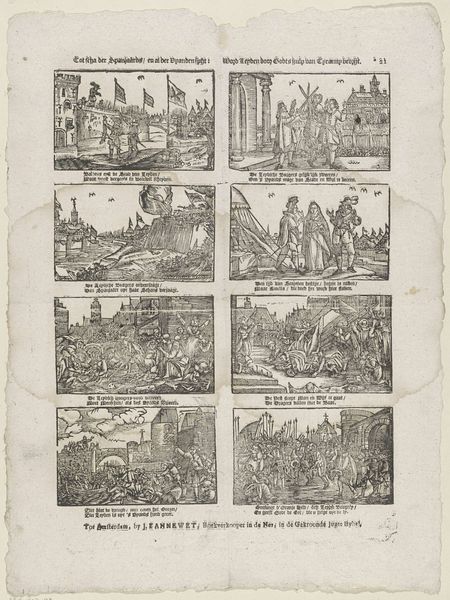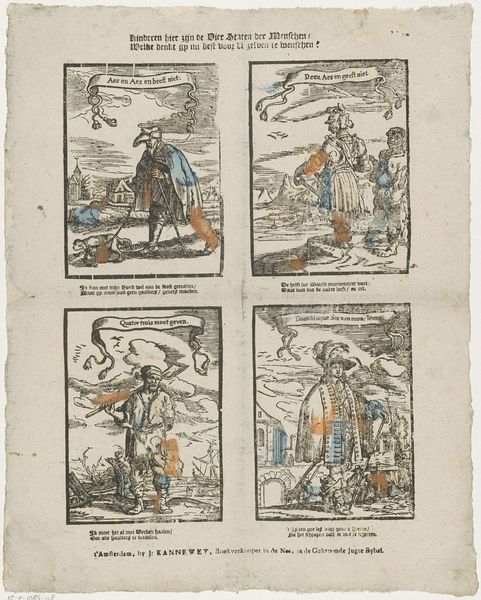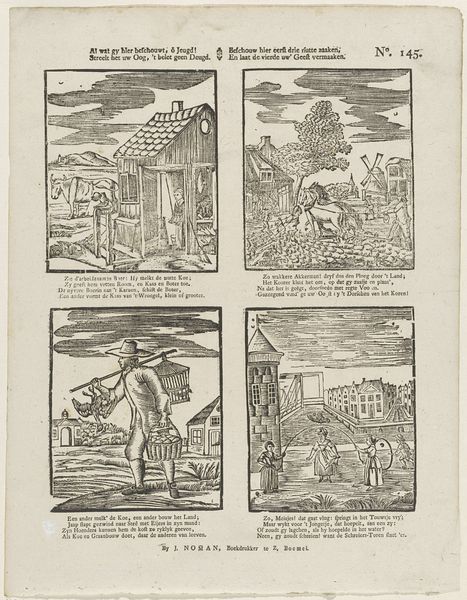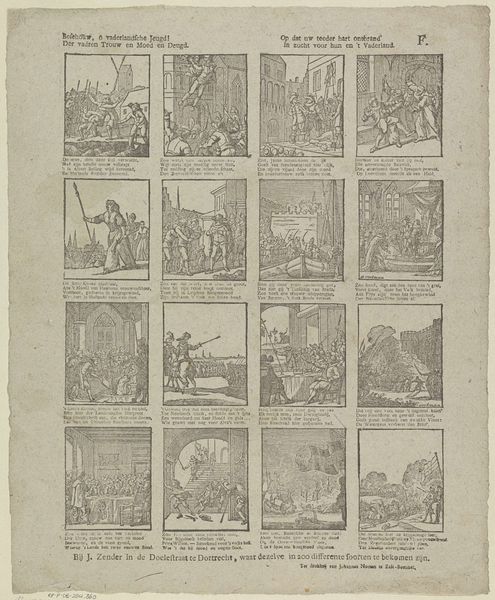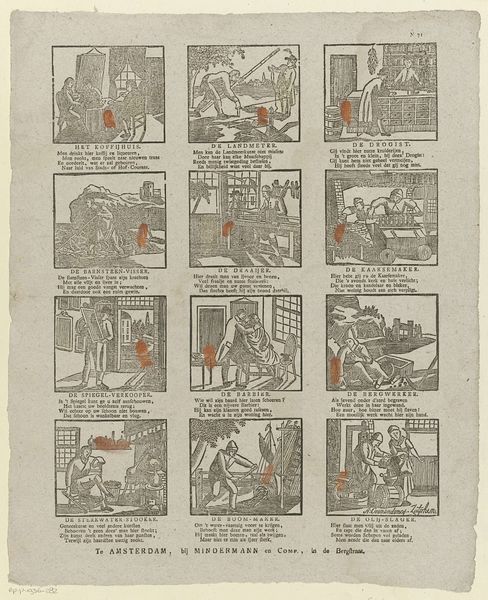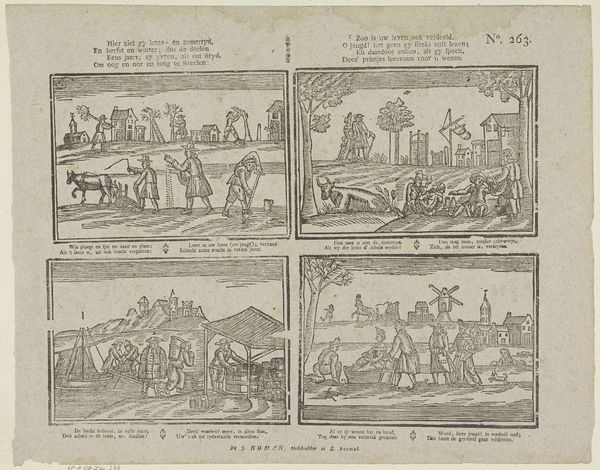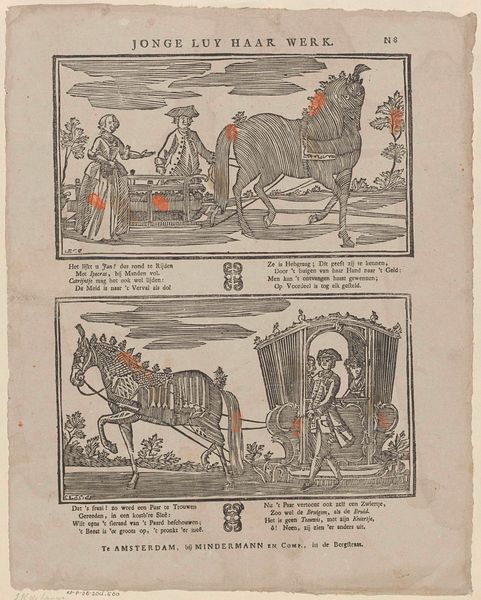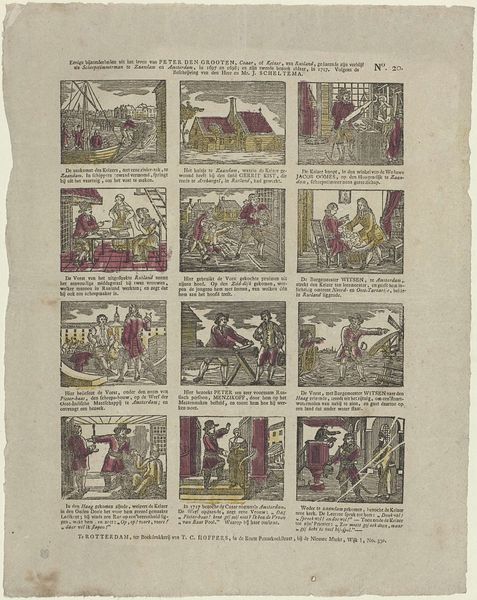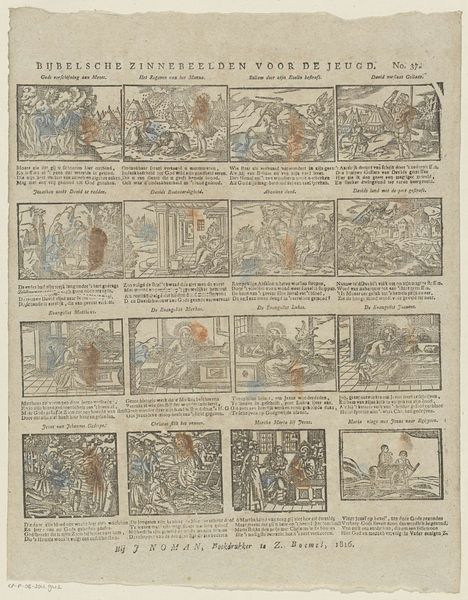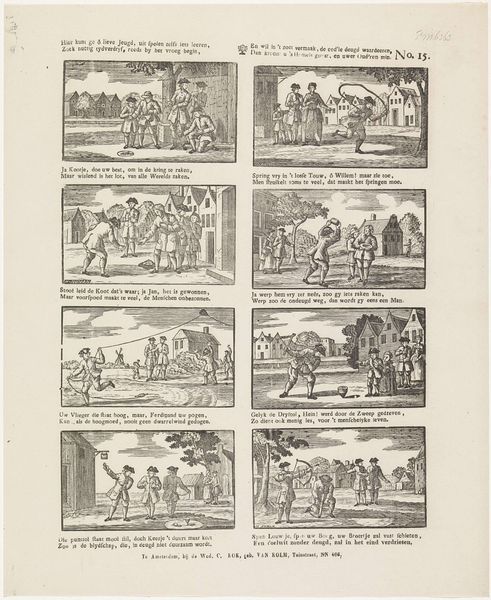
graphic-art, print, etching, engraving
#
graphic-art
#
narrative-art
#
dutch-golden-age
# print
#
etching
#
old engraving style
#
cityscape
#
history-painting
#
engraving
Dimensions: height 411 mm, width 326 mm
Copyright: Rijks Museum: Open Domain
Curator: Looking at this print, “Belegering en ontzetting des stad Leyden,” or "The Siege and Relief of the City of Leiden," made by Barend Koene sometime between 1814 and 1830, I’m immediately struck by the multiple scenes depicted. It almost reads like a comic strip chronicling events. Editor: It does give off a graphic narrative vibe. The small frames remind me of those historical prints meant to disseminate information rapidly. What’s most apparent to me is the labor invested in creating each precise line. This wasn’t a simple, mechanized process. The engraver clearly understood how to apply the correct pressure to translate depth and texture into each tableau. Curator: Yes, each little window seems to pack a punch, symbolically speaking. Flags feature heavily, recurring as potent motifs of Dutch national identity. We see them throughout the siege, as if marking points in the struggle and, ultimately, triumph. Editor: And think about the materiality! Consider what it means to reproduce images related to Dutch resistance against Spanish rule on paper, and how those images were circulated and consumed among different socio-economic classes at a crucial moment in the 19th Century. This etching wasn’t just passively observed; it participated actively in forming public opinion. Curator: Absolutely. Take, for example, the bottom left scene: a boat arriving into the city, filled with…herring? And cheese? I’d bet this depicts how Leiden was saved by food deliveries after the flood that ended the siege in 1574, and the herring and cheese symbolize that liberation. A very accessible, edible metaphor! Editor: It shows how essential even the seemingly mundane details are – sustenance as a material manifestation of liberation. Think, too, about the engraver Koene; his hands meticulously recreated these tiny slices of life, shaping public perception through each line he etched. That, too, is the hard work behind the making of history. Curator: Reflecting on it now, the artist employs specific motifs – food, flags, the Leiden cityscape itself–to ensure that this historical narrative retains its emotional charge over time. Editor: Precisely. It demonstrates just how profoundly the materials and production contribute to a sense of cultural cohesion around concepts like freedom and survival.
Comments
No comments
Be the first to comment and join the conversation on the ultimate creative platform.

